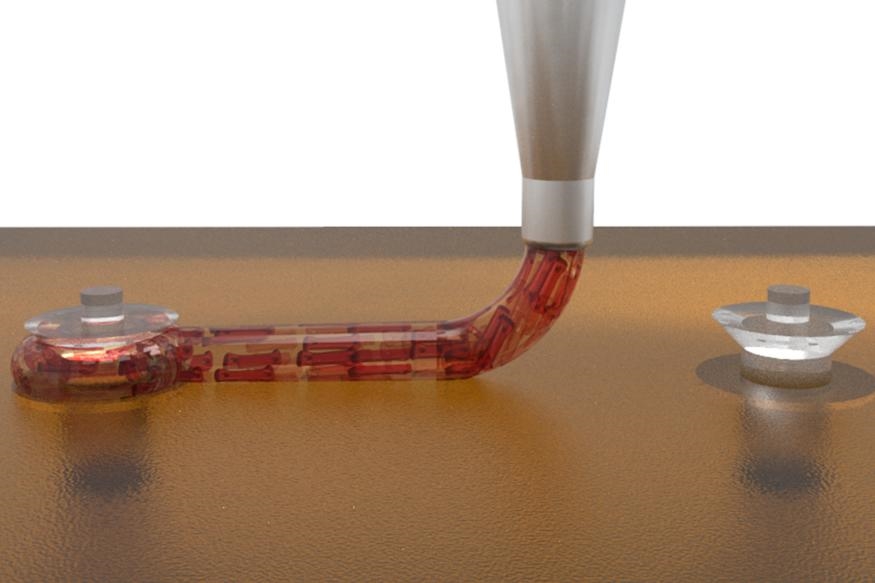Scientists 3D-print a functional piece of a heart
The technology could help repair damaged hearts.


Researchers have 3D-printed hearts using silicone and even a patient’s own cells, but they haven’t matched the full functionality of the real thing and aren’t much good for repairing hearts. There’s some progress on that front, however, as a team at Harvard’s Wyss Institute has developed a technique for 3D-printing long cardiac macrofilaments that develop into muscle-like filaments which contract. The new method mimics the complex alignment of a heart’s contracting elements (a difficult feat so far) while producing tissue thick enough to use in regenerative heart treatments.
The system is a refinement of Wyss’ existing SWIFT (Sacrificial Writing in Functional Tissue) bioprinting technology. Their approach created a platform with 1,050 wells, each with two microscopic pillars. Scientists filled the wells with human-induced pluripotent stem cells (that is, young cells capable of developing into multiple forms) as well as a protein collagen and the cells used to form connective tissue. The combination forms a dense tissue that aligns along the axis linking the micropillars. The team then lifts the resulting organ building blocks off the pillars, uses that to create a bioprinting ink and uses the motion of the 3D printer head to further help with alignment.
This is just a small piece of the heart. While the technology produces a relatively high output, there’s much more work to be done before a fully functional, 3D-printed organic heart is available.
The research group believes their work could still be useful long before reaching the whole-heart milestone. The 3D-printed filaments could be used to replace scars following heart attacks, or to create improved disease models. They might even patch holes in newborns with congenital heart defects, and would grow with those child patients. Simply put, a damaged heart might not be the permanent problem it tends to be today.
(26)